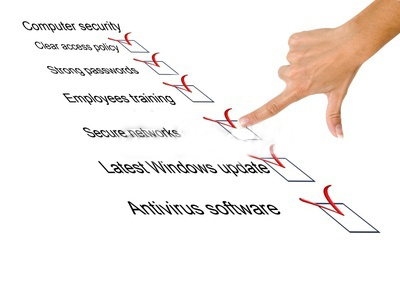
Physical Therapy Software: Adoption of an Integrated Tablet-Based EMR in Your Practice
It’s not enough for an EMR to be web-based, it needs to be tablet-based. Although the two terms seem synonymous, Nitin Chhoda explains the important difference between the two, and what it means to your practice.
 Adopting an EMR is beneficial for patients and physical therapists, but simply collecting information without being able to share among medical professionals defeats the spirit and purpose of physical therapy software automation.
Adopting an EMR is beneficial for patients and physical therapists, but simply collecting information without being able to share among medical professionals defeats the spirit and purpose of physical therapy software automation.
The American Physical Therapy Association has set forth a vision that allows therapists to treat clients across multiple health care settings and a tablet-based EMR will help make that goal a reality.
What is a Web-Based EMR?
A web-based physical therapy software EMR enables therapists to document patient visits, add notes and create billing, all in the moment. There’s no need to go back later to enter data or decipher hastily scribbled notations.
Records are secure, yet available to multiple providers at the same time to better coordinate treatment. EMRs can scan, digitize and sort information much faster than staff. Documents, photos, test results and x-rays are easily added to become part of the patient’s permanent health record.
Why Web-Based EMR?
Web-based physical therapy software EMRs allow for real time communication between medical professionals when consultations are required, using traditional email, video, podcasts and Skype. Patient information can be retrieved from any location equipped with an Internet connection, an important feature for the future of physical therapy. It’s an essential function for therapists that provide treatment outside the clinical setting.
A web-based EMR increases access to physical therapy services in venues ranging from home visits and senior centers to spas and corporate wellness programs.
Physical therapy software and practices are evolving in how they deliver services and EMRs will play a key role.
Integrating Web-Based EMR to a Tablet Device
Physical therapy software automation can be deployed from a variety of tablet devices, offering a lightweight and portable solution. Touchscreen interfaces allow therapists to enter data efficiently to reduce errors and reimbursement denials.
Custom forms can be developed to fit the needs of individual clinics. There’s no need for practice owners to install, maintain or host software systems on-site with a web-based system. Authorized users simply log in and access the required data.
Tablet-Based EMR Is Flexible
 The flexibility of tablet-based EMR systems allows therapists to integrate them easily with existing physical therapy software for additional value. They facilitate communications between patients and therapists.
The flexibility of tablet-based EMR systems allows therapists to integrate them easily with existing physical therapy software for additional value. They facilitate communications between patients and therapists.
In the office, tablet-based systems enable therapists to utilize photos and videos to help educate patients about their conditions and treatments.
Therapists can access any number of websites for information helpful for patients and make copies of pertinent information for clients to take with them.














 EMRs
EMRs Side-By-Side Coding
Side-By-Side Coding Billing
Billing


